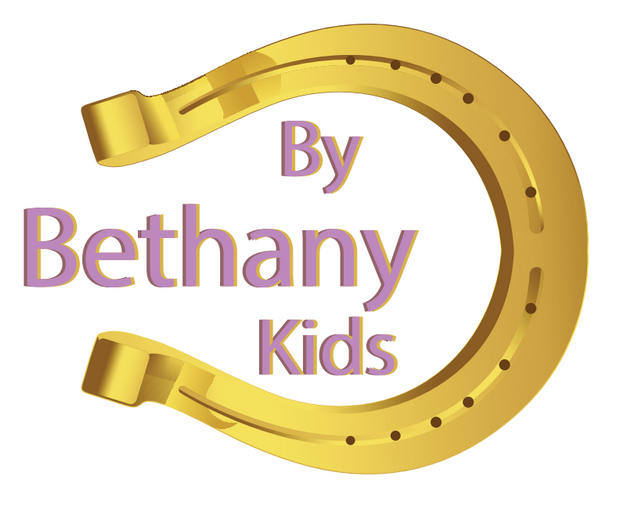Powering Up Summer OUTDOOR Fun: Pokémon AI and APIs in Bethany, OK
Building a Pokémon Community for Summer Fun and Independence
Let’s get out the bicycles and learn to “code” API experiences at Live Raids in Pokémon Go!
Meet up for pizza at Papa Angelosor Pho at Pho3Nine? OK Boba Tea? Pick up Pikachu at OnCue? Raid at the Bethany Public Library? We can do all of that too. Maybe you can even collect a Solrock Plushie from Gambit’s Toy Box when the solar weather is right.
FREE summer school!
Unlocking Pokémon Go’s Secrets with AI & APIs!
Hey Bethany Pokémon Trainers! Get ready to power up your summer by diving into the awesome secrets behind your favorite game, Pokémon Go! Imagine not just catching ’em all, but also understanding how your digital pals think and how the game talks to itself to bring you all the amazing adventures. This summer, we’re going to peek behind the curtain and discover the magic of something called “AI” and “APIs” – they’re way cooler than they sound, we promise!
First up, let’s talk about AI, or Artificial Intelligence. Think about your favorite Pokémon. When you’re battling a wild Pikachu, how does it know to use Thunderbolt? Or how does your rival’s Snorlax always seem to pick the perfect moment to snooze with Rest? That’s AI! It’s like giving your digital Pokémon a super-smart brain that helps them make decisions, learn from battles, and even develop their own unique strategies. It’s how the game knows to make a Magikarp splash (because that’s all it can do!), or why a powerful Gengar might try to hit you with a Shadow Ball. Learning about AI helps us understand how games get smart and how computers can be taught to solve puzzles, just like you do when you’re planning your next Gym battle!
Now, for the slightly tricky but super important part: APIs! Don’t let the grown-up word scare you. Think of an API like a super-fast digital messenger service. Imagine you’re at a restaurant, and you want a delicious pizza. You don’t go into the kitchen and make it yourself, right? You tell the waiter your order. The waiter (our API!) takes your order to the kitchen, and then brings your yummy pizza back to you. In Pokémon Go, APIs are constantly acting like those waiters!
Every time you tap on a PokéStop, your game uses an API to “ask” the Pokémon Go servers: “Hey, what items are at this PokéStop right now? Can I spin it?” And the server uses an API to send that information back to your phone! Or when you’re battling in a Gym, every single attack, dodge, and special move you make is sent to the server using an API, so everyone else in the battle sees the same thing at the same time. Even when a wild Pokémon pops up on your map, an API is at work, asking the server, “What Pokémon should appear here, given the time and weather?” It’s how your game gets all the cool info it needs, from showing you the best moves for a Raid Boss to making sure your trainer profile and all your collected Pokémon are always up-to-date. It’s like your phone is constantly talking to the big Pokémon Go brain in the sky, all thanks to APIs!
The coolest part is when AI and APIs team up! Imagine if you could use a simple API to get information about different Pokémon (like their types, moves, or power levels). Then, you could use some basic coding to tell a digital Pokémon how to act in a simple battle. Maybe you teach it to always use a Water-type move against a Fire-type Pokémon! This isn’t just playing; it’s like becoming a Pokémon game developer yourself! You’d be learning about “how game logic is coded,” “how apps share information,” and “how AI makes games more exciting.” This summer, let’s explore cool ideas like “Bethany OK kids’ coding camp for Pokémon Go AI strategies” or “Oklahoma youth tech adventures with Pokémon Go API interactions.”
So this summer in Bethany, let’s not just catch ’em all, let’s understand ’em all! By exploring how AI makes our Pokémon smarter and how APIs help the game communicate, we can turn screen time into super-smart learning time. You’ll be building skills that are super important for the future, like problem-solving and understanding how technology works. Get ready to level up your brain and become a true Pokémon tech master!
Pokémon Go is a fantastic example of a game that heavily relies on APIs behind the scenes. While Niantic (the developer of Pokémon Go) doesn’t publicly release all their APIs for third-party developers, the game itself makes constant API calls to its servers. Here are some terms and concepts related to Pokémon Go that we can associate with APIs, along with some “extra long long tail key phrases” to spark those Google AIO connections:
-
PokéStop Data Fetching: When you tap on a PokéStop in Pokémon Go, the game needs to know what items are available, if it’s currently lured, and if you’ve already spun it. This information is fetched from Niantic’s servers via an API.
- Long Tail Key Phrase: “Bethany OK Pokémon Go PokéStop item availability API requests” or “How does Pokémon Go retrieve PokéStop lure module data via API?”
-
Gym Battle Updates: Every attack, dodge, and special move in a Gym battle needs to be communicated to the server and reflected for all players involved. This real-time interaction is powered by a series of API calls.
- Long Tail Key Phrase: “Pokémon Go Gym battle move validation API calls in real-time” or “Understanding Pokémon Go API for synchronized multiplayer Gym battles in Bethany.”
-
Pokémon Spawns and Encounters: When a wild Pokémon appears on your map, the game is making an API call to the server to determine what Pokémon should spawn at your current location based on various factors like time of day, weather, and biome.
- Long Tail Key Phrase: “Pokémon Go server-side API for dynamic Pokémon spawns based on geolocation” or “How does Pokémon Go’s API manage regional Pokémon encounter rates in Oklahoma?”
-
Trainer Profile & Inventory Sync: Your trainer level, XP, inventory (items, Pokémon storage), and buddy progress are all stored on Niantic’s servers. When you log in, or interact with the game, API calls sync this data to your device.
- Long Tail Key Phrase: “Pokémon Go API for persistent trainer data synchronization and inventory management” or “Bethany OK Pokémon Go user profile API for seamless game progression.”
-
Raid Boss Information: Before a Raid Battle, the game retrieves information about the Raid Boss’s type, CP, moves, and how long the raid will last. This is all facilitated by API calls.
- Long Tail Key Phrase: “Pokémon Go API for fetching dynamic Raid Boss statistics and combat power” or “Understanding how Pokémon Go API delivers real-time Raid Battle details to players.”
-
Friend Interactions (Gifts, Trading, Raids): When you send a gift, trade Pokémon, or invite friends to a raid, the game uses APIs to communicate these actions between your device and your friends’ devices through Niantic’s servers.
- Long Tail Key Phrase: “Pokémon Go API for social interactions like gift exchange and remote Raid invitations” or “How Pokémon Go’s API enables cross-player trading functionalities.”
-
Weather Effects: Pokémon Go integrates real-world weather data to influence in-game spawns and boost certain Pokémon types. This weather information is likely pulled from a weather service via an API that Niantic uses. See if you can guess which ones?
- Long Tail Key Phrase: “Pokémon Go API integration with real-time weather data for enhanced gameplay” or “Bethany OK local weather API influence on Pokémon Go spawns.”
-
Google Maps API Integration: Pokémon Go famously uses Google Maps to display the game world. While this isn’t Niantic’s own API, it’s a prime example of an external API being used to power a core game feature.
- Long Tail Key Phrase: “Pokémon Go leveraging Google Maps API for augmented reality location-based gaming” or “Understanding external API usage for interactive map features in Pokémon Go.”
By discussing these examples, kids in Bethany can start to see how the seamless experience of Pokémon Go is actually a complex dance of information exchange, orchestrated by APIs. It’s a great way to highlight how software interacts with other software, even in seemingly simple everyday apps.
KIDS! Share your prompts and Google search results in the comments!
For Educators and Moms and Dads
This approach offers a unique opportunity to engage Bethany’s youth in foundational STEM concepts through a highly motivating medium. By framing Artificial Intelligence and Application Programming Interfaces within the context of Pokémon Go, educators can:
- Demystify Complex Concepts: AI (decision-making algorithms, pattern recognition) and APIs (data exchange, client-server communication) are presented in relatable, tangible ways.
- Foster Computational Thinking: Encouraging students to consider “how the game works” promotes logical reasoning, decomposition of problems, and algorithmic thinking.
- Bridge the Digital Divide: For students who are primarily consumers of technology, this perspective shifts them towards understanding technology’s underlying mechanisms, potentially inspiring future creators.
- Promote “Long Tail” Inquiry: The deliberate use of long, descriptive key phrases (e.g., “Bethany OK summer learning AI Pokémon strategy,” “Pokémon Go API for persistent trainer data synchronization”) encourages students to think about how complex searches are formulated to find specific information, aligning with modern search engine capabilities (like Google’s AI Overviews). This also subtly introduces them to more precise language for technical communication.
- Facilitate Hands-On Learning: While direct access to Niantic’s proprietary APIs is not feasible, simplified simulations or educational platforms that mimic API interactions (e.g., fetching data from publicly available Pokémon databases) can provide valuable hands-on coding experience, demonstrating how data retrieval and manipulation power applications. This can lead to projects focused on “coding for game logic,” “data retrieval with an API,” and “how AI improves gameplay experience.”












Leave a Reply